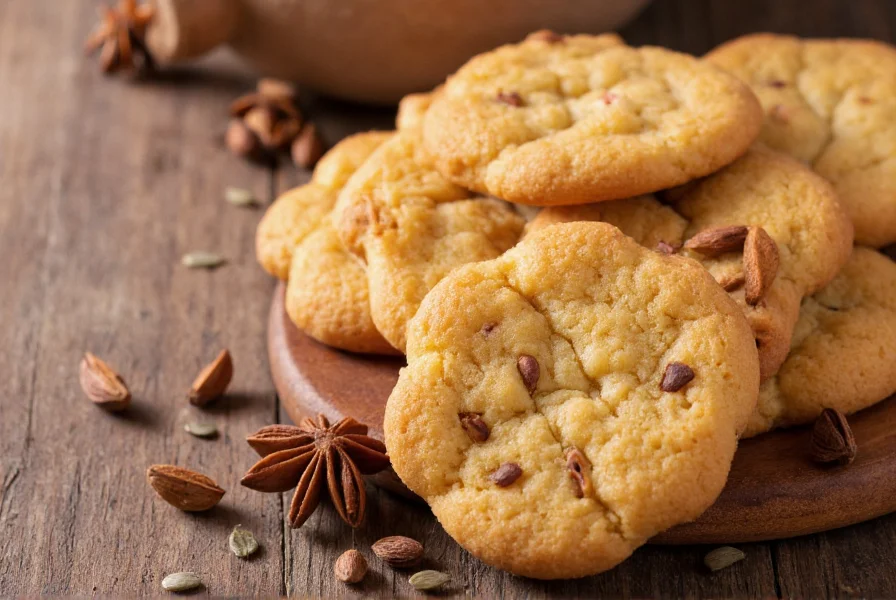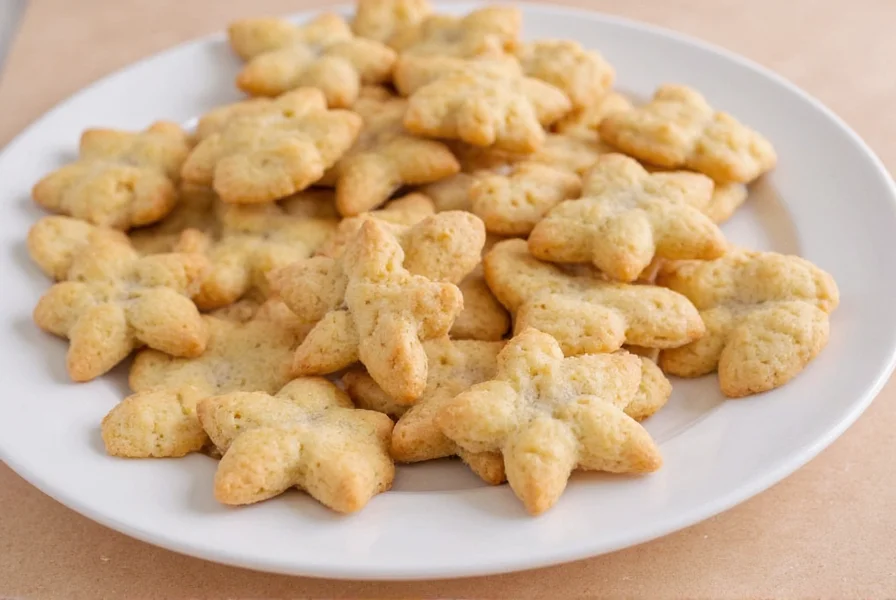The Rich Heritage of Anise Cookies
Anise cookies boast a culinary history spanning centuries and continents. Originating in Mediterranean and Middle Eastern baking traditions, these fragrant treats traveled with immigrants to become beloved in Italian pizzelle, Greek koulourakia, and Mexican polvorones de anís. The distinctive flavor comes from anise seeds (Pimpinella anisum), which contain anethole—the same compound found in star anise and fennel but with a more delicate profile. Understanding this heritage helps bakers appreciate why certain techniques, like toasting seeds or using specific fat ratios, make the difference between good and exceptional anise cookies recipes.

Understanding Anise Flavor Profiles
Not all anise sources deliver identical results in baking. True anise seeds provide a sweet, complex licorice note different from star anise or anise extract. For traditional Italian anise cookies recipe success:
| Flavor Source | Intensity | Baking Recommendation |
|---|---|---|
| Whole anise seeds | Moderate | Toast lightly before use; grind partially for balanced flavor |
| Anise extract | Strong | Use 1/4 teaspoon per cup of flour; combine with seeds for depth |
| Star anise | Intense | Infuse in cream or milk; remove before baking |
Professional bakers recommend using freshly ground anise seeds for how to make anise seed cookies with optimal aroma. The volatile oils dissipate quickly after grinding, so process seeds just before incorporating them into your dough. For gluten free anise cookies variation, increase binding agents like xanthan gum by 1/4 teaspoon per cup of alternative flour to compensate for the seeds' texture.
Classic Anise Cookies Recipe
This time-tested formula yields 24 delicate cookies with balanced anise flavor and perfect texture. The secret lies in the creaming technique and precise baking time.
Ingredients
- 2 cups all-purpose flour (or gluten-free 1:1 blend)
- 1 cup unsalted butter, softened
- 3/4 cup granulated sugar
- 2 large eggs
- 2 tablespoons whole anise seeds, lightly toasted
- 1 teaspoon baking powder
- 1/2 teaspoon salt
- Zest of one orange
- 1/4 teaspoon anise extract (optional for intensified flavor)
Method
- Preheat oven to 350°F (175°C) and line baking sheets with parchment
- Cream butter and sugar until light and fluffy (3-4 minutes)
- Beat in eggs one at a time, then add orange zest and extract
- Mix dry ingredients separately, then gradually incorporate into wet mixture
- Fold in 1.5 tablespoons of the toasted anise seeds (reserve remainder for topping)
- Shape dough into 1-inch balls, then flatten slightly and form into crescents
- Sprinkle with remaining seeds and bake 12-14 minutes until golden at edges
- Cool completely on wire racks before storing
Mastering Anise Cookies Baking Techniques
Achieving perfect anise cookies requires attention to several critical factors. Temperature control proves essential—butter should be softened but not melted, and dough benefits from a 30-minute chill to prevent excessive spreading. For crispier cookies, bake 1-2 minutes longer; for softer centers, remove when edges just begin browning.
Common issues and solutions:
- Overpowering licorice flavor: Reduce seeds to 1.5 tablespoons or toast more thoroughly to mellow intensity
- Flat, spread-out cookies: Chill dough minimum 30 minutes before baking; verify accurate oven temperature
- Dry, crumbly texture: Add 1-2 teaspoons of milk or cream to dough; don't overbake
- Uneven browning: Rotate baking sheets halfway through; use light-colored pans
Cultural Variations Worth Trying
Explore regional interpretations of anise cookies for diverse flavor experiences:
- Italian Pizzelle: Wafer-thin anise cookies pressed in special iron, often served with coffee
- Greek Koulourakia: Braided butter cookies with egg wash glaze, traditionally made for Easter
- Mexican Anisones: Crisp cookies rolled in sugar before baking, featuring orange blossom water
- German Anisbrötchen: Soft, cardamom-enhanced version often enjoyed with tea
Each variation demonstrates how anise complements different cultural flavor profiles. The best anise flavor for baking depends on your desired outcome—whole seeds provide texture and gradual flavor release, while extracts deliver immediate potency. For holiday baking, consider adding chopped pistachios or dipping finished cookies in dark chocolate to create sophisticated anise cookies baking tips-worthy treats.
Storage and Serving Recommendations
Proper storage maintains anise cookies' delicate texture. Keep in airtight containers at room temperature for up to two weeks, or freeze for three months. Place parchment between layers to prevent sticking. Storing anise cookies properly requires avoiding moisture exposure, which softens their crisp edges.
Serve with:
- Espresso or strong coffee to complement the licorice notes
- Mascarpone cheese for a traditional Italian pairing
- Fruit compote for contrast against the aromatic flavor
Frequently Asked Questions
What's the difference between anise seeds and star anise in cookies?
True anise seeds (Pimpinella anisum) provide a sweeter, more delicate licorice flavor compared to star anise, which has a sharper, more intense profile. Anise seeds work better in cookie doughs where you want visible specks and gradual flavor release, while star anise typically gets infused into liquids then removed. For most traditional anise cookies recipes, whole anise seeds deliver the authentic taste bakers seek.
Why did my anise cookies turn out too dry?
Dry anise cookies usually result from overbaking, too much flour, or insufficient fat. Measure flour properly using the spoon-and-level method, not scooping directly from the bag. Ensure butter is properly creamed with sugar to incorporate air, and remove cookies from the oven when edges just begin browning—they'll continue cooking on the baking sheet. Adding 1-2 teaspoons of milk or cream to the dough can also improve moisture retention.
Can I make gluten-free anise cookies that taste authentic?
Yes, successful gluten-free anise cookies require a quality 1:1 substitute flour blend and minor adjustments. Increase xanthan gum by 1/4 teaspoon per cup of flour to mimic gluten's binding properties. You may need slightly more liquid as GF flours absorb more moisture. Toasting the anise seeds becomes even more critical in gluten-free versions to maximize flavor since the texture differs from traditional cookies.
How do I prevent my anise cookies from spreading too much?
Chill the dough for at least 30 minutes before baking to solidify the butter. Verify your oven temperature with an independent thermometer, as inaccurate heat causes excessive spreading. Use parchment paper instead of greased pans, and avoid overcrowding the baking sheet. If problems persist, reduce sugar by 1-2 tablespoons or increase flour by 1-2 tablespoons in your next batch.
What's the best way to store anise cookies for freshness?
Store cooled anise cookies in an airtight container at room temperature with parchment between layers. They maintain optimal texture for 10-14 days. For longer storage, freeze in freezer-safe containers for up to three months. Avoid refrigeration, which introduces moisture that softens the cookies' crisp edges. Place a sugar cube in the container to absorb excess moisture if needed.











 浙公网安备
33010002000092号
浙公网安备
33010002000092号 浙B2-20120091-4
浙B2-20120091-4